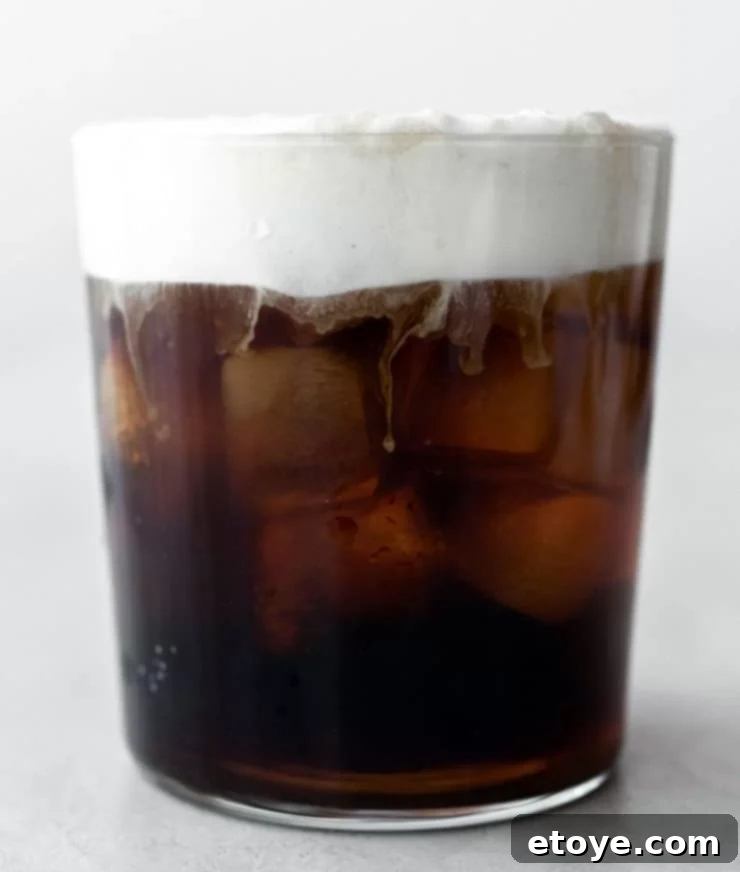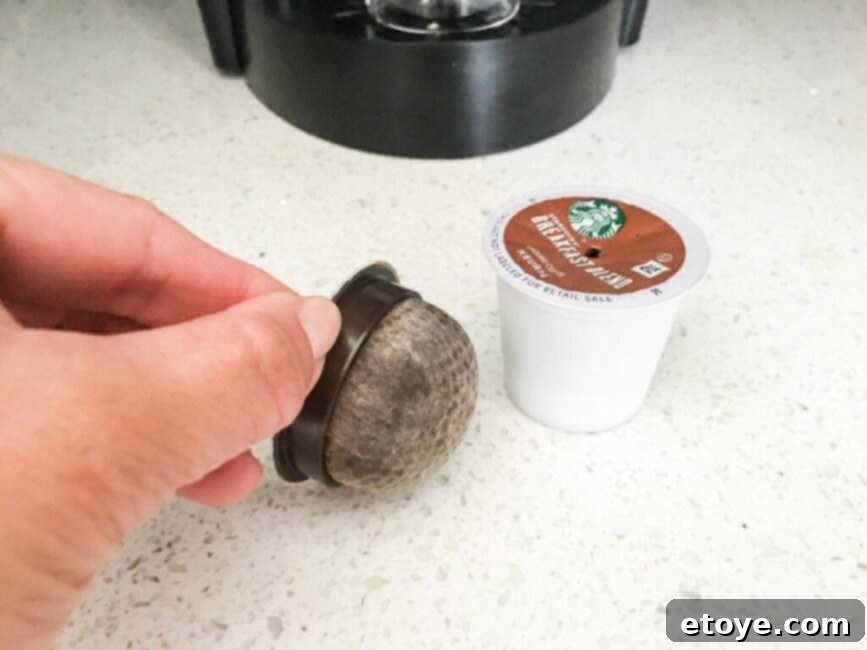The Ultimate Guide to Storing Coffee: Keep Your Brew, Beans & Cold Brew Exceptionally Fresh
For many coffee enthusiasts, the ritual of brewing a fresh cup of joe is a cherished daily delight. But what happens when you’ve brewed more than you can possibly drink in one sitting? The common solution is often to tuck the remainder into the fridge, but then a crucial question arises: how long will that precious liquid truly stay fresh and flavorful? Let’s dive deep into the world of coffee preservation, ensuring every sip is as good as the first.

How Long Does Brewed Coffee Last? The Short Answer and Beyond
So, how long can your freshly brewed coffee confidently reside in the refrigerator? Typically, plain black coffee can maintain its drinkability for up to a week when properly stored in the fridge. However, it’s vital to understand that while it might not “spoil” in the traditional sense, its peak flavor and aromatic qualities will start to diminish significantly after just a couple of days. For those who enjoy the smooth, less acidic profile of cold-brew coffee, there’s good news: you generally have a more generous window, often up to two weeks, before its quality seriously declines.
This timeline isn’t absolute, though. A variety of factors play a crucial role in determining the true shelf life of your coffee. Understanding these elements and adopting best practices for storage is key to extending the freshness of your brew.
Black Coffee vs. Cold Brew: A Difference in Longevity
The distinction in shelf life between hot-brewed and cold-brewed coffee isn’t arbitrary. Hot water extracts a wider range of compounds, including volatile oils and acids, which contribute to a richer flavor but also break down more quickly, leading to a stale taste. Cold brewing, conversely, extracts fewer of these heat-sensitive compounds, resulting in a brew that is naturally more stable and less prone to rapid flavor degradation. This is why cold brew, especially when made from concentrate, tends to hold its exquisite flavor for a longer duration.
Key Factors Affecting Coffee’s Shelf Life
To truly master the art of coffee preservation, it’s essential to understand the forces at play. Several elements influence how long your coffee maintains its desirable characteristics:
Brewing Method Matters
The way you brew your coffee is the first step in determining its post-pot longevity. Different methods extract flavors and oils from the coffee grounds in unique ways, impacting how the brew ages. For instance, hot brewing methods, such as drip coffee or French press, utilize hot water to extract a full spectrum of oils and compounds, often resulting in a bold, full-bodied cup. While delicious initially, these extracted elements are more susceptible to oxidation and degradation, causing the coffee’s flavor to deteriorate faster.
Cold brew, on the other hand, relies on time rather than heat. This process extracts fewer of the acidic and bitter compounds and fewer volatile oils. The result is a smoother, less acidic concentrate that is inherently more stable and resistant to flavor changes over time. If you’re looking for maximum shelf life, a cold brew concentrate is often your best bet.
The Silent Enemies: Air and Light
When it comes to coffee degradation, oxygen and light are your primary adversaries. Oxygen initiates oxidation, a chemical process that causes coffee to lose its fresh aroma and develop stale, sometimes rancid, off-flavors. Light, particularly UV rays, can also trigger chemical reactions that alter the delicate flavor compounds, speeding up the overall deterioration of your brew. This is why proper storage in an opaque, airtight container is paramount.
The Power of Proper Storage
This factor is non-negotiable. Storing your brewed coffee in a clean, airtight container is critical. An airtight seal prevents oxygen from interacting with the coffee and keeps unwanted odors from your refrigerator at bay. Furthermore, placing this container in a dark spot, away from direct sunlight or any heat sources, will protect it from light and temperature fluctuations that accelerate spoilage. This simple step is an incredibly effective way to preserve both flavor and aroma for a longer period.
Additives: Friend or Foe?
Many coffee lovers enjoy their brew with a dash of milk, cream, or a spoonful of sugar. While these additions enhance the immediate drinking experience, they significantly reduce your coffee’s shelf life. Dairy products and sugars provide excellent food sources for bacteria and yeast, accelerating spoilage and potentially leading to undesirable flavors or even health risks. To maximize the longevity of your coffee, it is always best to store it black and add any desired milk, cream, or sweeteners just before serving.
Identifying Spoiled Coffee: Trust Your Senses

Unlike some foods that develop obvious mold or a strong, foul odor when spoiled, coffee’s deterioration can be more subtle. However, drinking stale or rancid coffee isn’t just an unpleasant experience for your taste buds; it can also lead to stomach upset. Relying on your senses is the best way to determine if your coffee is past its prime:
Aroma and Taste: The First Indicators
The most immediate and reliable indicators of spoiled coffee are changes in its aroma and taste. Freshly brewed coffee boasts a rich, complex, and inviting scent. If you notice a sour, metallic, musty, or otherwise off-putting odor when you take a whiff of your refrigerated coffee, it’s a strong signal that it has likely gone rancid. Similarly, if the taste is unusually bitter, sour, flat, or just generally unpalatable, it’s time to pour it down the drain. Trust your palate; if it doesn’t taste right, it probably isn’t.
Visual Cues and Consistency Changes
While less common with brewed coffee, any visible changes are major red flags. If you detect any alterations in consistency, such as a slimy, gritty, or unusually thick texture, discard it immediately. The presence of mold growth, unusual discoloration (beyond its natural brown hues), or any floating particles are undeniable signs that your coffee is no longer safe or enjoyable to consume. In such cases, prompt disposal is the only safe option.
Maximizing the Shelf Life of Your Brewed Coffee
Even with factors that affect longevity, there are proactive steps you can take to keep your brewed coffee fresh for as long as possible:
Airtight Storage Solutions
The cornerstone of coffee preservation is the use of airtight containers. Whether you’re storing it in the refrigerator or at room temperature (for a very short duration), a sealed container is crucial. It acts as a barrier against air, moisture, and light, all of which accelerate the oxidation process that makes coffee stale. Glass mason jars with tight-fitting lids or thermal carafes are excellent choices, as they don’t impart flavors and offer good protection.
The “Add Later” Rule for Additives
As discussed, milk, cream, and sugar significantly shorten the life of your coffee by promoting bacterial growth. To ensure maximum freshness and longevity, always store your coffee black. Add any desired dairy products or sweeteners only at the moment you are ready to drink it. This simple habit can dramatically extend the drinkable period of your brew.
Freezing Brewed Coffee: Pros, Cons, and Best Practices
While some debate its impact on peak flavor, freezing is a viable option if you have a large excess of brewed coffee and wish to preserve it for an extended period. Some argue that freezing can slightly dull the delicate nuances of coffee flavor, but it’s an excellent no-waste solution. If you choose this method, brewed coffee can be kept in the freezer for up to two weeks. When ready to use, transfer it to the refrigerator overnight for a gradual thaw. For an even more practical approach, pour leftover coffee into ice cube trays. These “coffee cubes” are fantastic for chilling iced coffee without diluting it, or for use in blended drinks and smoothies, offering a concentrated coffee kick.
The Importance of Labeling
This often-overlooked step is surprisingly effective. Always label your storage containers with the date you brewed the coffee. This straightforward practice allows you to easily track its freshness, ensuring you consume your coffee within its optimal window and preventing any guesswork about its age.
Creative Ways to Repurpose Leftover Coffee (Beyond the Cup!)
Nobody likes to waste a good brew. If you find yourself with more coffee than you can drink, don’t let it go to waste! Here are some ingenious ways to give your leftover coffee a second life:
Crafting Coffee Syrups and Sauces
Unlock new culinary possibilities by transforming brewed coffee into flavorful syrups and sauces. Gently simmer leftover coffee with sugar and a hint of spices like vanilla extract, cinnamon, or nutmeg. This creates a unique, aromatic syrup that can elevate breakfast staples like pancakes, waffles, or French toast. It’s also a fantastic way to add depth to your next morning cup of coffee, or even better, drizzle it over ice cream, baked goods, or other desserts for a sophisticated touch.
Natural Dyes for Crafts and Textiles
For the artistically inclined, coffee offers an eco-friendly and natural alternative to synthetic dyes. Its rich brown hues can create beautiful earthy tones, perfect for achieving a vintage, antique, or rustic aesthetic on fabrics, paper, or even wood. To use, simply soak your chosen material in a concentrated coffee solution. Allow it to air dry completely, then rinse it with cold water to help set the color. Experiment with different coffee strengths for varying shades.
Enhancing Your Garden with Coffee Grounds
If you’re a coffee lover, you’re likely generating a steady supply of leftover coffee grounds. These aren’t waste; they’re a gardener’s gold! Coffee grounds are rich in nitrogen, potassium, and other essential minerals, making them an excellent natural fertilizer for acid-loving plants like roses, blueberries, and azaleas. Sprinkle them around the base of your plants or mix them directly into the soil to enrich its nutrient content. Additionally, coffee grounds help improve soil drainage and aeration, fostering a healthier environment for robust plant growth.
The Genius of Coffee Ice Cubes

As briefly mentioned, freezing leftover brewed coffee into ice cubes is a brilliant strategy to prevent waste and enhance your cold coffee experience. Forget about regular ice cubes that water down your iced coffee or blended drinks; coffee ice cubes provide undiluted flavor. They’re perfect for iced coffee, smoothies, milkshakes, or even creative cocktails, adding a delicious coffee kick without compromising the taste.
Expert Tips for Storing Cold Brew Coffee
Cold brew coffee has captured the hearts of many with its naturally smooth, low-acid, and rich flavor profile. To ensure your homemade or store-bought cold brew retains its exquisite taste, proper storage is paramount:
The Right Container for Cold Brew
Always store your cold brew coffee in a sealed, airtight container. This is crucial for two reasons: it prevents oxygen from degrading the coffee’s flavor, and it stops the cold brew from absorbing any unwanted odors from other foods in your refrigerator. A glass container with a tight-sealing lid is ideal, as it’s non-reactive and maintains the cold brew’s pristine aroma and flavor.
Refrigerator: The Ideal Environment
The consistent cold temperature of your refrigerator is essential for slowing down the natural degradation process of the coffee’s delicate flavors. While freezing is an option for longer-term storage (as discussed for hot brew), it can sometimes subtly alter cold brew’s texture and taste profile. For daily consumption and optimal flavor, the fridge is your best friend, keeping your cold brew perfectly chilled without compromising its quality.
Optimal Consumption Window
Even though cold brew lasts longer than hot brewed coffee, it’s generally best to consume it within one to two weeks. Beyond this period, even in the fridge, the flavor may start to dull, and off-notes might begin to develop. As with any stored food, labeling your container with the brew date will help you keep track of its freshness and ensure you enjoy it at its peak.
Shake for Perfection
Before pouring yourself a glass of cold brew, always give the container a gentle shake. This simple action helps to re-mix any coffee solids that may have settled at the bottom and ensures the flavors are evenly distributed throughout the entire batch. This guarantees a consistent and delicious experience with every serving.
Versatility: Hot or Cold?
One of the fantastic attributes of cold brew is its versatility. It can be enjoyed in its traditional cold form, poured over ice, or gently warmed on the stovetop or in the microwave for a surprisingly smooth hot coffee experience. Its concentrated nature makes it adaptable to various serving styles, so feel free to experiment to find your preferred way to savor your cold brew.
Dilution for Desired Strength

Cold brew concentrate is typically much stronger than standard hot brewed coffee. This concentration allows for customization of its strength. You can dilute your cold brew with water, milk, or even ice cubes (coffee ice cubes, perhaps?) to achieve your desired intensity. If it feels too strong, add more diluent; if it’s just right, enjoy as is!
Storing Coffee Beans for Peak Freshness
The journey to a perfect cup begins long before brewing: it starts with how you store your coffee beans. Improper storage can quickly render even the highest quality beans stale and flavorless. Here’s how to preserve their peak freshness:
The Essential Airtight Container
Coffee beans are highly susceptible to oxidation, which causes them to lose their volatile aromatic compounds and develop stale flavors. Therefore, storing them in an airtight container is non-negotiable. Look for containers specifically designed for coffee storage, often featuring a one-way valve that allows carbon dioxide (a natural gas released by fresh beans) to escape without allowing oxygen in. This creates an optimal environment for freshness.
Cool, Dark, and Away from Humidity
Store your coffee beans in a cool, dark place, away from any heat sources like ovens or direct sunlight. While “cool” might make you think of the fridge or freezer, these are generally *not* recommended for whole beans. The fluctuating humidity levels inside a refrigerator can introduce moisture, leading to mold growth and accelerating staleness. Moreover, coffee is porous and can easily absorb the odors of other foods in the fridge, tainting its delicate flavor profile.
Moisture: A Bean’s Worst Enemy
Just like oxygen and light, moisture is a significant threat to coffee bean freshness. It can lead to the premature degradation of oils, mold growth, and a generally flat, stale taste. Always keep your beans in a dry environment, such as a pantry or a dedicated cupboard, far from any sources of humidity.
Buy Smart: Small Batches are Best
To ensure you’re always brewing with the freshest beans, it’s wise to buy them in smaller quantities. Aim to purchase only what you expect to use within one to two weeks of the roast date. This strategy ensures you’re consistently enjoying coffee at its optimal flavor peak, rather than risking stale beans.
Grind on Demand
One of the most impactful tips for fresh coffee is to grind your beans just before brewing. Grinding vastly increases the surface area of the coffee exposed to air, accelerating the loss of delicate flavors and aromas. Investing in a good quality burr grinder and grinding your beans right before brewing will unlock the freshest, most aromatic cup possible, making a noticeable difference in taste.
Guard Against Odor Absorption
Coffee beans are excellent at absorbing ambient odors. To prevent your coffee from taking on the scent and flavor of garlic, spices, or other strong-smelling items in your pantry, store them away from such products. Keeping your coffee in a separate, dedicated cupboard or in a highly sealed container that prevents odor transfer is your best defense.

Frequently Asked Questions (FAQs)
Here are some common questions about coffee storage and freshness, answered for your convenience:
How long can I keep brewed coffee at room temperature?
Brewed coffee should not be left at room temperature for more than two hours. Beyond this timeframe, it enters the “danger zone” where bacteria can multiply rapidly, posing a risk of foodborne illness. If you don’t plan to drink your brewed coffee immediately, it’s always safest to store it in the refrigerator.
What kind of container should I use for brewed coffee?
For brewed coffee, a sealed, airtight container is ideal. Options include a glass mason jar with a tight-fitting lid, a vacuum-sealed pitcher, or a high-quality thermal carafe. These containers help preserve the coffee’s freshness by minimizing exposure to air and prevent it from absorbing undesirable odors from your refrigerator.
How long does day-old coffee stay fresh in the refrigerator?
While day-old coffee can remain safe to drink in the refrigerator for up to a week, its flavor and aroma will begin to degrade significantly after 24 hours. For the best taste experience, it’s advisable to consume day-old coffee within 24-48 hours, or repurpose it creatively if you prefer not to drink it.
Can coffee connoisseurs usually tell if brewed coffee has been stored improperly?
Absolutely. Avid coffee drinkers, particularly connoisseurs, are exceptionally attuned to the subtle nuances of coffee flavor and aroma. They are often very particular about their brew and can readily detect signs of improper storage, such as staleness, off-flavors, or a diminished aromatic profile. The general consensus among them is a strong preference for freshly brewed and properly stored coffee.
Is it safe to reheat coffee?
Yes, it is generally safe to reheat coffee. However, reheating can often diminish its flavor, making it taste more bitter or burnt due to the further degradation of flavor compounds. If you do reheat, do so gently on the stovetop or in the microwave, avoiding boiling. For best results, consider making coffee ice cubes and using them to chill freshly brewed coffee instead of reheating.
What’s the difference between “Best By” and “Roast Date” on coffee packaging?
The “Roast Date” indicates when the coffee beans were roasted, which is the most critical date for freshness, especially for specialty coffee. Coffee is typically at its peak flavor within 1-4 weeks of the roast date. A “Best By” date, on the other hand, is usually a general estimate of when the coffee will retain its quality, often several months to a year after roasting. Always prioritize the roast date for optimal flavor.
The Final Brew: Enjoying Every Drop
We hope this comprehensive guide has answered all your coffee storage questions and empowered you to better understand how to preserve your brew, ensuring it tastes almost as exceptional as when it was fresh from the pot. By implementing these tips, you can minimize waste and maximize your enjoyment of this beloved beverage.
Every coffee lover has their unique rituals and preferences, and we’d love to hear from you! What are your secrets to keeping coffee fresh? Do you have favorite additions to your brew? What are your most creative ways to use leftover coffee? Do you prefer cold brew or hot brew, and what’s your go-to brewing method? Have you ever ventured into baking with coffee or crafting homemade syrups? Share all your coffee insights and favorite things with us in the comments below. We always appreciate hearing your take!
From our team, we wish you a day filled with magic, and may your coffee always be fresh and perfectly brewed (unless you prefer it cold, of course). Happy sipping!
